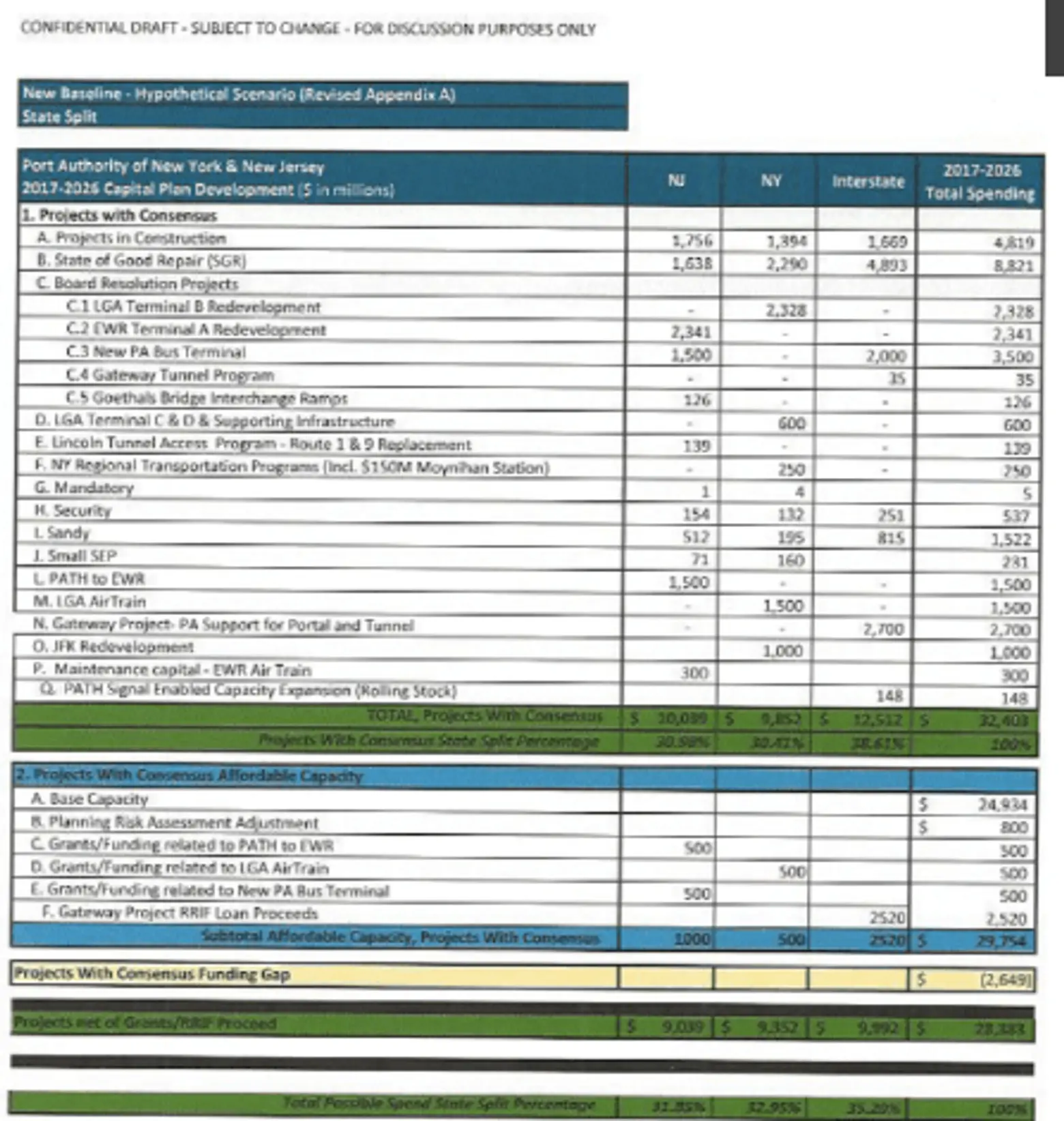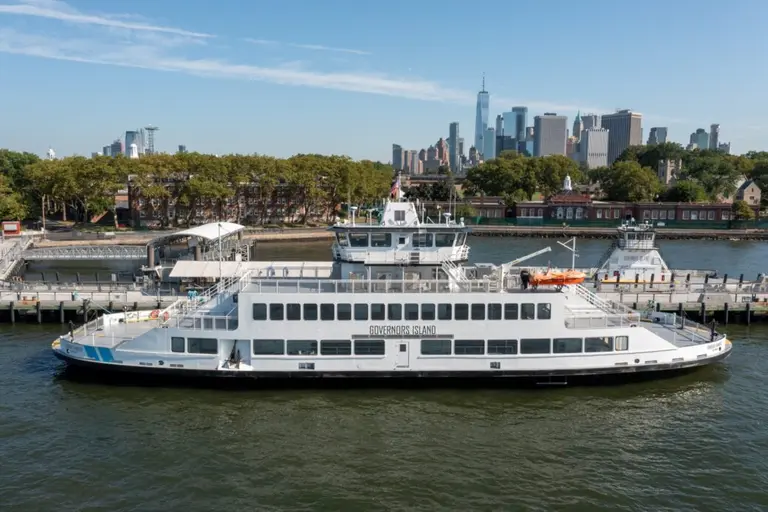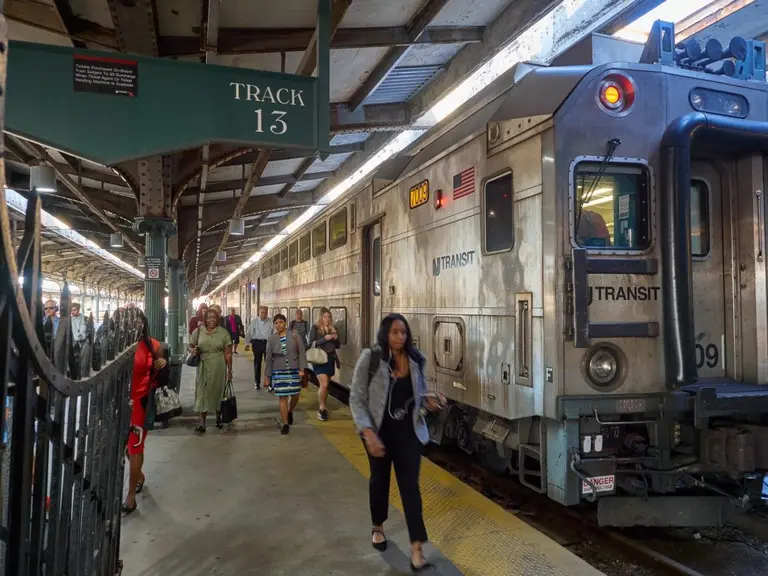Port Authority’s ‘quid pro quo capital plan’ for NY and NJ stifles infrastructure improvements

Yesterday, 6sqft revealed Governor Cuomo’s plan to give JFK Airport a long overdue overhaul, an endeavor that would cost nearly $10 billion, funded just over two-thirds in part by the private sector with another $2 billion provided by the government. Given that most of New York and New Jersey’s regional transportation infrastructure (including bridges, tunnels and airports) falls within the joint jurisdiction of the Port Authority of New York and New Jersey, New Jersey will as a result receive similar funding for a project of their own—and that’s a problem according to The Record reporter Paul Berger. Yesterday, Berger published a confidential document obtained from the Port Authority that details how $30 billion will be spent on infrastructure over the next 10 years. While the purpose of the Port Authority is to divvy up cash across the region based on need, as Berger writes, the document simply shows how “interstate jealousies over funding” have led to a “quid pro quo capital plan” that completely bucks this objective.
Berger reached out to Port Authority Chair John Degnan for comment and was told that “demand by both states to be treated equally has led to a drive to ensure that an equal amount of money is spent on the perceived priorities for residents of each state” (the statement also confirmed the document’s legitimacy). Adding to that, Degnan defended the document saying that “most of the projects in the capital plan represent the recommendations of staff [engineers and transportation planners] as to which projects have the highest priority.” He stressed, too, that the page Berger uncovered is a “hypothetical allocation” and is subject to change.
Although the document is a draft, it reveals a near even distribution of dollars between the states, with about 32 percent of the budget going to each New Jersey and New York and the remaining dedicated to “interstate projects.” While on the surface an even split can be interpreted as fair, critics argue that this approach to budgeting is “extreme” and in the long-run harmful.
Peter Goldmark, who headed up the Port Authority from 1977 to 1985, told Berger that there is a real problem basing the budget on how much “each state can get from the Port Authority as opposed to what the Port Authority can do for the region.” He added, “The states seem to have sunk to a period of tit-for-tat competition that is probably not the best way to get macroeconomic strength and growth for the region.”
The story also points out how governors have provided additional bottlenecks to progress, naming Governor Cuomo as the most recent example. While Cuomo has been gung-ho about pouring money into NYC airports, Penn Station, the Second Avenue Subway, and other projects like a new Javits Center, all of which succinctly benefit New Yorkers, he has in private pegged the much-needed overhaul of The Port Authority Bus Terminal a “New Jersey project” (it is indeed mostly used by Jersey commuters) not worth fighting for funding, but rather limiting investment. As we previously reported, the whole project came to a standstill in November because officials couldn’t agree on how much should be contributed to the estimated $10 billion bill. And still, as seen in the preliminary budget document, $3.5 billion has been earmarked for the terminal; the cost divided between New Jersey ($1.5 billion) and interstate ($2 billion), not New York state specifically, despite the fact that the terminal is situated in Manhattan and would benefit the local economy.
In closing, Berger acknowledges the The Port Authority is cash-strapped and that it is impossible to meet every need, thus “the capital planning process is always a negotiation” he writes. However, while the agency says it means well, i.e. seeking to approve projects based on merit or need, the movement towards parity in the budget is quite clear. Christopher Ward, the Port Authority’s executive director from 2008 to 2011, said, “There is a healthy reciprocity between the two states for the allocation and prioritization of development projects. [But] when it reaches this level of specificity, it allows for questionable projects to make it to the forefront.” The development of the backwards LaGuardia AirTrain is singled out as an example.
Port Authority commissioners will meet today to further hammer out how the $30 billion budget should be spent within the region over the next 10 years.
[Via The Record North Jersey]
***UPDATE 1/5/17, 2:30pm: Governor Cuomo’s office announced this afternoon that the Port Authority will put forth a $32 billion 10-year (2017-2026) capital plan; $9.8 billion will be dedicated to New York projects, $9.8 billion for New Jersey projects and $12 billion for interstate projects.
Regarding the Port Authority Bus Terminal, Cuomo said, “New York will be committing approximately one-third of the funding for a new bus terminal on the West Side of Manhattan, an investment proportional to our ridership, following a full environmental review.”
RELATED:
 Open in full view >>
Open in full view >>




























